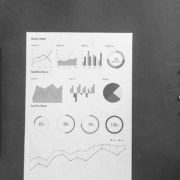When Forecasts Lie: The Hidden Cost of False Precision in FP&A
We once reviewed a model from a CFO who claimed his forecast was accurate to the penny.
It wasn’t.
It only looked that way.
The workbook was polished — balanced, reconciled, color-coded, every cell accounted for. Yet inside that perfection lived a quiet flaw that erodes credibility across finance teams: false precision.
The Illusion of Accuracy
False precision happens when finance teams confuse decimal accuracy with decision accuracy.
A forecast with two decimal points feels reliable.
A single, unqualified number feels in control.
But those digits are often fiction dressed as certainty.
A 1.37% churn rate. A 2.4x pipeline multiplier. A $49.86M forecast.
Each implies confidence. None accounts for reality’s volatility.
Precision soothes executives. It silences doubt.
And that’s exactly how it blinds judgment.
How FP&A Builds Its Own Trap
Many FP&A teams still operate like mechanical accountants instead of system engineers.
We connect 60 tabs, reconcile every penny, and confuse smooth spreadsheets with stable systems.
False precision hides in three predictable places:
- Over-granular drivers. Hardcoding single-point assumptions instead of modeling natural ranges makes a model fragile. One change ripples through a thousand formulas.
- Variance obsession. Chasing tiny variances creates noise instead of insight. We end up steering by ripples instead of currents.
- Static time logic. Monthly granularity feels like control but hides the volatility that happens between periods.
The pattern is always the same: the cleaner the model looks, the more rigid it becomes.
The Paradox
Here’s the paradox: the more precise our model appears, the less adaptive it becomes.
Precision breeds overconfidence.
Overconfidence hides uncertainty.
And uncertainty, when ignored, becomes the most expensive blind spot in finance.
In FP&A, clarity and control rarely coexist.
The harder we cling to one, the more we lose of the other.
What False Precision Costs
When forecasts lie, the costs compound quietly.
- Slower pivots. Leaders delay action, waiting for data that will never be perfect.
- False confidence. Teams overcommit resources to a number that never had a margin for error.
- Credibility erosion. Once reality proves the decimals wrong, trust in FP&A fades.
- Strategic paralysis. The debate shifts from what’s next to who’s right.
Precision feels safe. But fake safety is risk in disguise.
Detecting False Precision
We can’t fix what we don’t measure — so we start by stress testing our own logic.
1. Run a 1% Input Stress Test=(Output_with_Input*1.01 - Output)/Output
If outputs swing by more than 10%, the model is amplifying noise.
We often ask ChatGPT to flag nonlinear sensitivity:
“Which inputs cause volatility if each changes by 1%?”
The results always reveal hidden fragility.
2. Visualize Input Ranges=CONFIDENCE.T(alpha, standard_dev, sample_size)
Setting α = 0.05 produces a 95% confidence band.
Instead of a single assumption, show a range:
Retention = 92% ± 3%, forecast = $46.8M–$50.4M.
That’s honesty, not weakness.
3. Build Dynamic Sensitivity Tables
| Growth Rate | Churn 3% | Churn 6% | Churn 9% |
|---|---|---|---|
| 5% | $47.2M | $45.9M | $44.6M |
| 10% | $49.8M | $48.5M | $47.1M |
| 15% | $52.3M | $51.0M | $49.6M |
That’s the real forecast — not a number rounded to the cent.
4. Layer Uncertainty Logic into Formulas
Instead of =Revenue * (1 - Churn), introduce parameter variation:=Revenue * (1 - RAND()*(0.08-0.04) - 0.04)
Each recalculation reflects possible volatility. The model breathes again.
5. Apply Monte Carlo Logic=AVERAGE(IF(SEQUENCE(1000,,1,1), Revenue*(1-RAND()*(0.08-0.04)-0.04)))
Now your forecast produces a probability-weighted mean — 1,000 outcomes instead of one illusion of control.
True precision is a distribution, not a decimal.
The Cognitive Side
Why do finance teams cling to false precision?
Because uncertainty threatens identity.
For decades, finance was defined as the department of the number.
Not the range. Not the probability. Just the number.
Executives reward confidence, not calibration. Analysts conflate neatness with mastery. And somewhere along the way, we mistook polish for truth.
It’s a cultural hangover — the precision fallacy.
More digits feel like more control, even when they mean less understanding.
Reframing Accuracy
Modern FP&A has to redefine accuracy itself.
Accuracy isn’t about numeric proximity — it’s about decision relevance.
We ask: Does this forecast help us act faster and smarter?
Not: Does it tie out to last month’s guess?
| Old Mindset | New Mindset |
|---|---|
| Perfect reconciliation | Useful ranges |
| Month-end certainty | Continuous calibration |
| Single forecast | Dynamic envelopes |
| Variance autopsy | Signal detection |
| Precision = safety | Precision = illusion |
The Framework: Adaptive Forecasting Loop
False precision dies when forecasting becomes adaptive.
Step 1 — Baseline Reality, Not Budget
Pull actuals automatically with Power Query:=Excel.CurrentWorkbook(){[Name="Actuals"]}[Content]
A forecast that depends on copy-paste is already lying. Live data makes false precision harder to hide.
Step 2 — Define Driver Ranges
| Driver | Min | Base | Max |
|---|---|---|---|
| CAC | 1.8x | 2.2x | 2.6x |
| Retention | 88% | 92% | 96% |
| Conversion | 22% | 25% | 28% |
=CHOOSE(Scenario, Min, Base, Max)
We add RAND() weighting for probabilistic realism.
Step 3 — Automate Uncertainty Runs
Ask ChatGPT:
“Simulate 500 forecast outcomes varying CAC, retention, and conversion within defined ranges. Return mean, median, and 90% confidence interval.”
| Metric | Mean | P10 | P90 |
|---|---|---|---|
| ARR | $48.7M | $46.1M | $51.2M |
| EBITDA | $6.4M | $5.1M | $7.8M |
This is the shape of uncertainty — not a single number pretending to be truth.
Step 4 — Visualize Volatility
Plot fan charts instead of static lines.
Seeing the range is what restores confidence — because it shows what’s real.
Step 5 — Convert Precision to Probability
When we speak in probabilities, decision quality improves.
Not: “We’ll hit $50M.”
But: “There’s a 70% chance we’ll land between $48M–$52M.”
That’s leadership built on clarity, not control.
The Human Reset
Models rarely fail because of formulas.
They fail because of beliefs.
False precision survives because it flatters the ego — it makes us feel in command of chaos. But confidence born from control illusions is still a lie.
Owning uncertainty doesn’t weaken finance. It matures it.
What Modern FP&A Looks Like
Modern finance teams now build systems that anticipate uncertainty rather than fear it.
Driver networks replace static sheets.
Scenario engines refresh dynamically.
Confidence dashboards reveal the truth in ranges.
Decision APIs quantify risk before meetings begin.
They don’t chase perfect forecasts.
They design resilient systems that keep decisions accurate even when inputs aren’t.
The Schlott Company Proof Layer
At The Schlott Company, we build FP&A systems with uncertainty baked in.
Every model includes driver ranges, confidence envelopes, and volatility heatmaps. We stress-test assumptions, automate refreshes, and flag signal-to-noise ratios before errors propagate.
We don’t chase decimals.
We chase decisions.
Because precision without uncertainty awareness isn’t professionalism — it’s performance art.
Closing Paradox
The CFO who once bragged about being “accurate to the penny” eventually discovered his forecast was off by 11%. The mistake wasn’t the number — it was the mindset.
The truth is simple: in modern FP&A, truth lives inside the range.
Precision feels powerful.
But clarity — the kind built on adaptability — is what truly leads.









